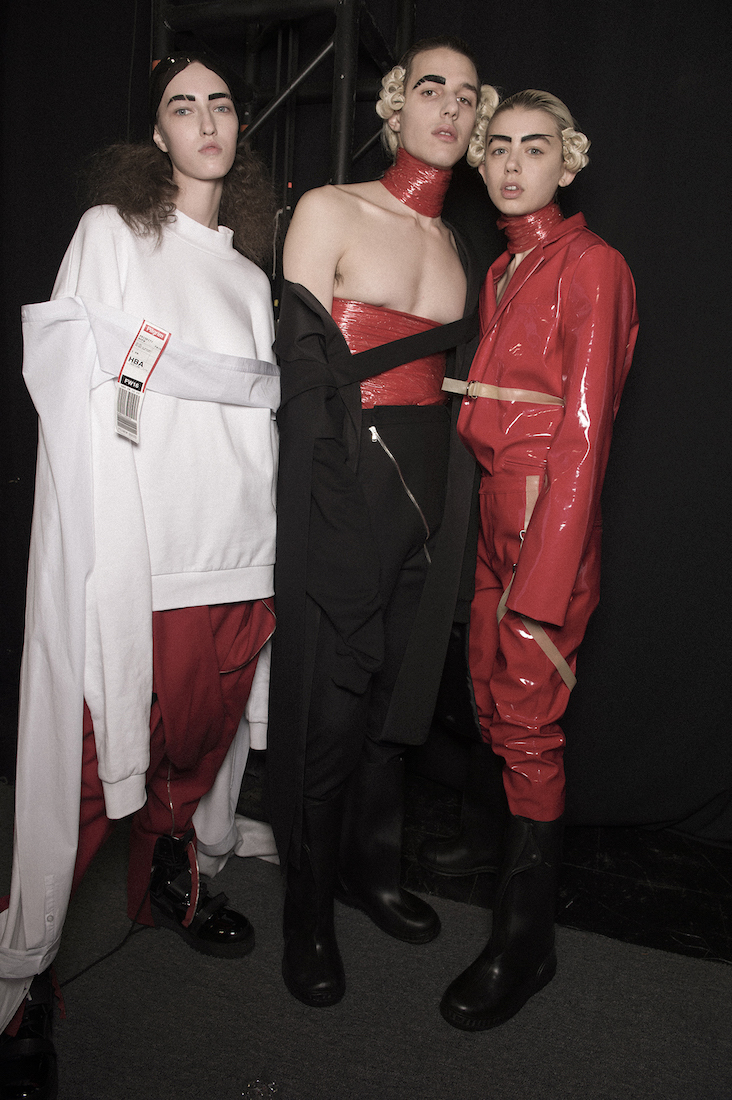Shayne Oliver’s been based partly in Italy recently, and last month he staged a men’s couture happening in Paris. His fall/winter 16 show was, in a way, a triumphant homecoming to New York — inspired, fittingly, by the founding fathers.
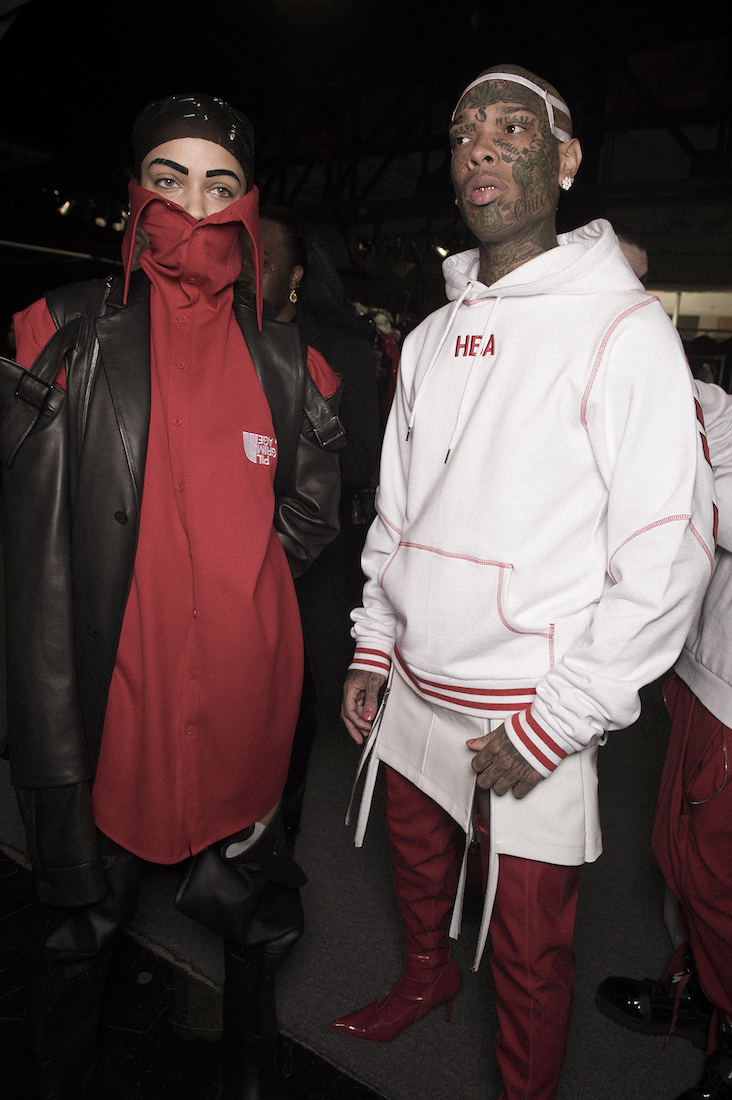
“I’m home, I’m comfortable. I feel like I can do ferocious things like that and it’s not too much of a show,” he said backstage after what was arguably his most ferocious, and show-like show to date.
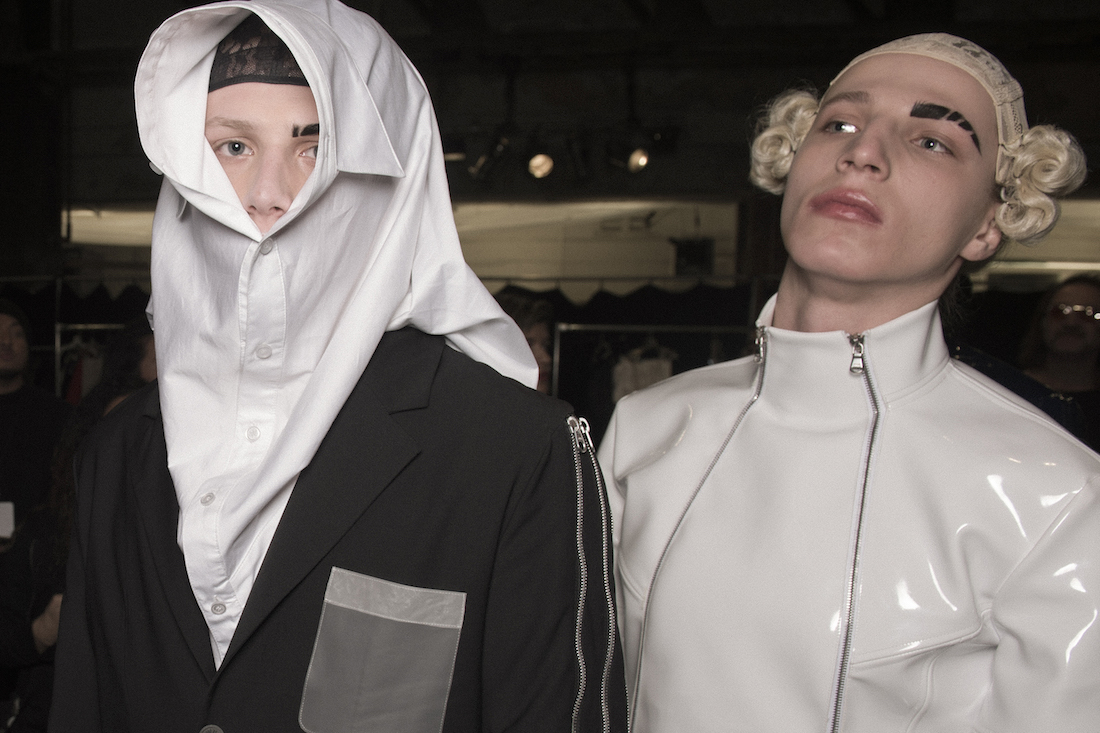
Prefaced by a remixed version of “Formation” (courtesy of Total Freedom, who spun an original score), models engaged in what felt at times more like theatre than runway. Wearing glossy PVC stilettos and heeled wading boots, they variously skulked, strutted, and hurled themselves down the catwalk and up into the bleachers with a wild energy that visibly widened the eyes of those sitting across the front row. (One editor decided to put on her sunglasses a few minutes in.)
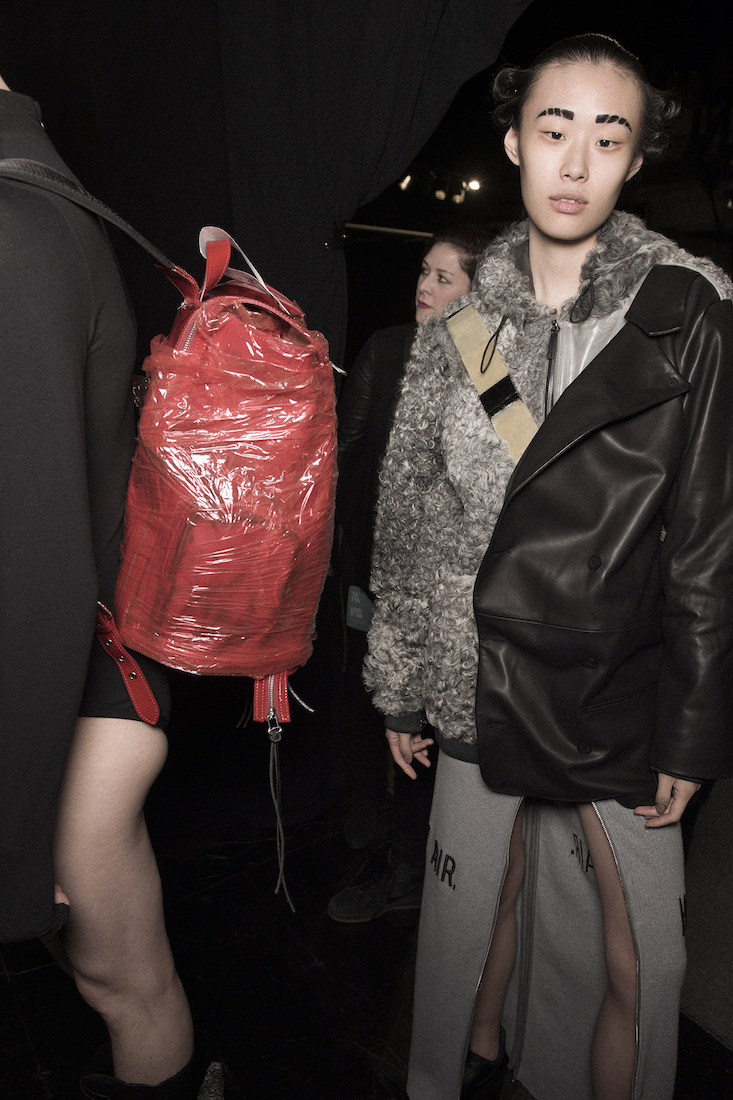
The most visible clue to Oliver’s thinking this season were the wigs — curled hairpieces affixed to the sides and backs of models’ that brought to mind, combined with the antic walking, the manic brilliance of Amadeus. They were also, as Oliver suggested backstage, evocative of judges and the age of colonialism.
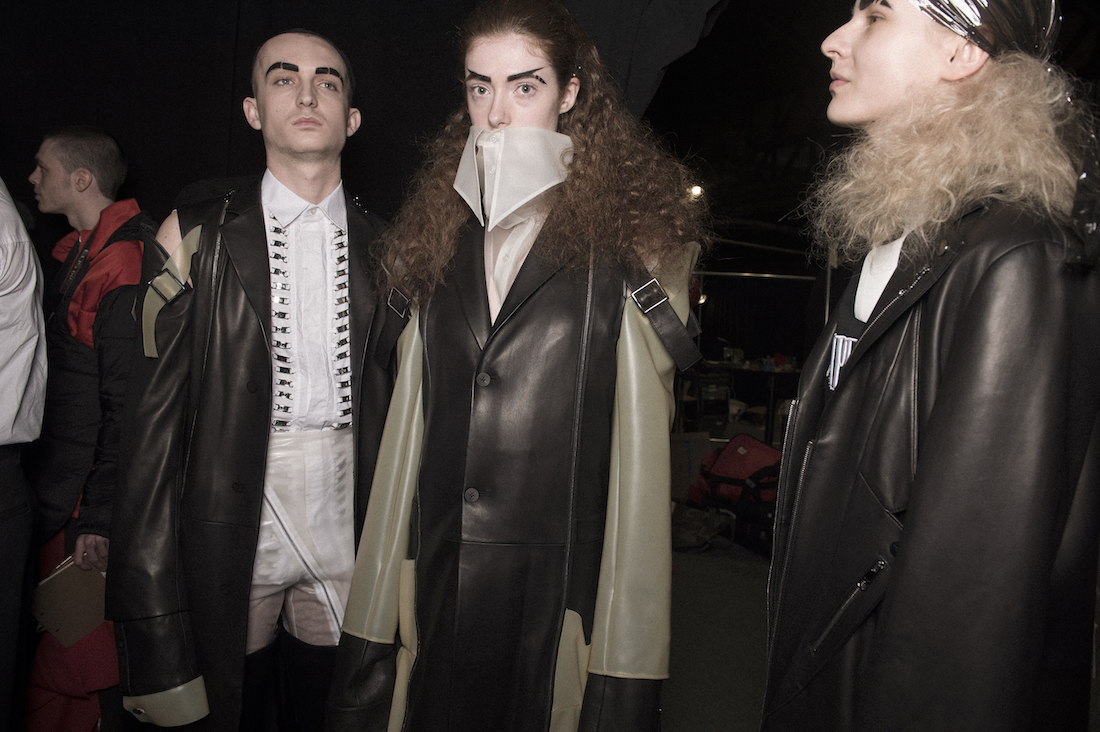
“I was fetishizing the idea of going outside America and coming back,” Oliver said. United under a central theme of flight and travel (seating assignments were printed on paper airline tickets), he was contemplating pilgrims, the shakers, and perhaps also refugees.
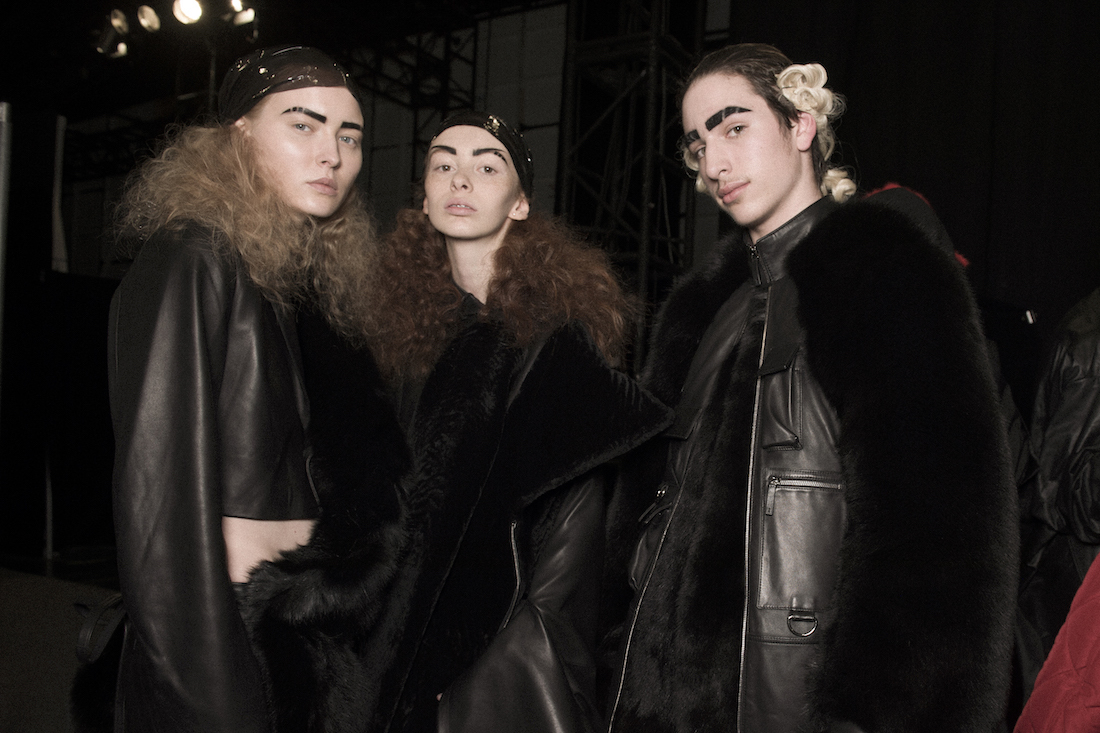
The Russian artist Slava Mogutin, who sought asylum in the US — faced with LGBT persecution in his home country — walked down the runway trailing a seven-foot-long puffer coat made from shiny stripes of red and black vinyl. Held high above his head, it looked more like a banner raised after a battle victory than a garment. Given Mogutin’s background, it was impossible not to relate Oliver’s message or repatriation to the current refugee crisis.
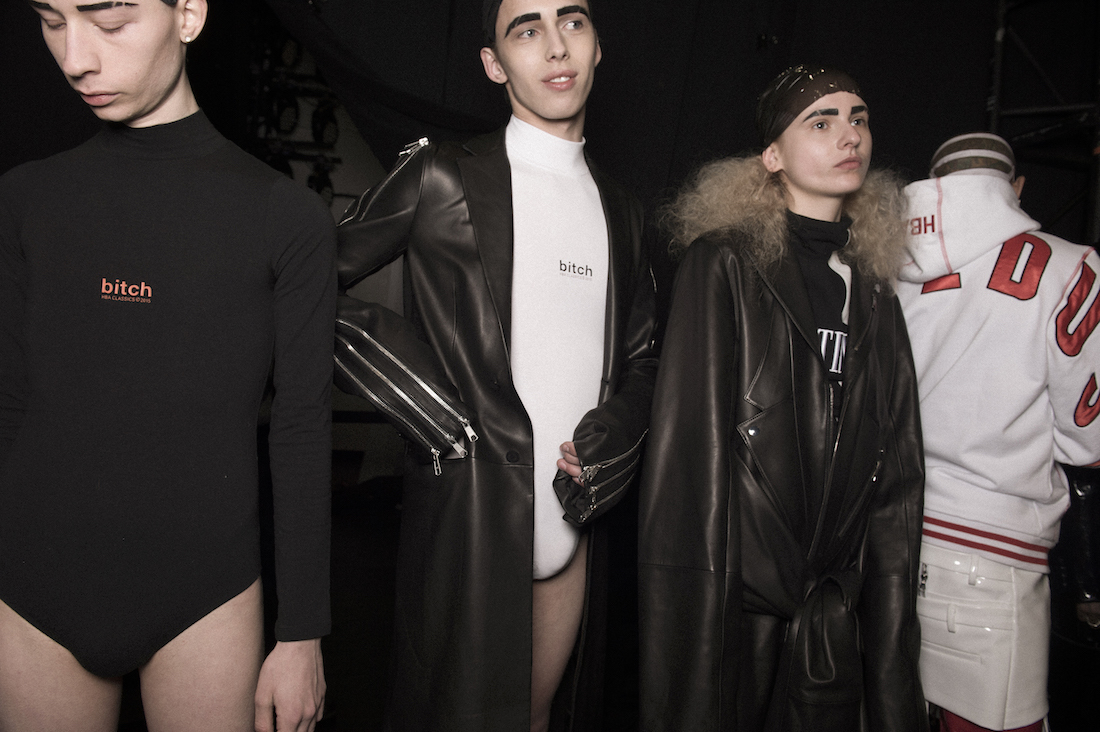
It would be over-literal to say that Oliver was thinking about people as baggage, but then, that suggestion was made in the most brilliantly literal way: One look saw a male model constricted by a thick band of red luggage wrap, his arms pinned to his side beneath a faintly aristocratic fur coat. At his neck another band of tape was adorned with an airline bag tracking sticker.

The look felt revolutionary — as did so many of the others, in which Oliver continued to articulate his vision of, put simply, what people wear but also how they live. Men walked in bodysuits emblazoned with the word “bitch,” PVC coats had giant ruffles of transparent latex up the back, and various pieces bore a remixed version of the iconic North Face logo. This was Oliver’s statement of a paradigm-shifted, post-revolution future. And it’s time the rest of the (fashion) world gets on board.
Credits
Text Alice Newell-Hanson
Photography Jason Lloyd Evans
